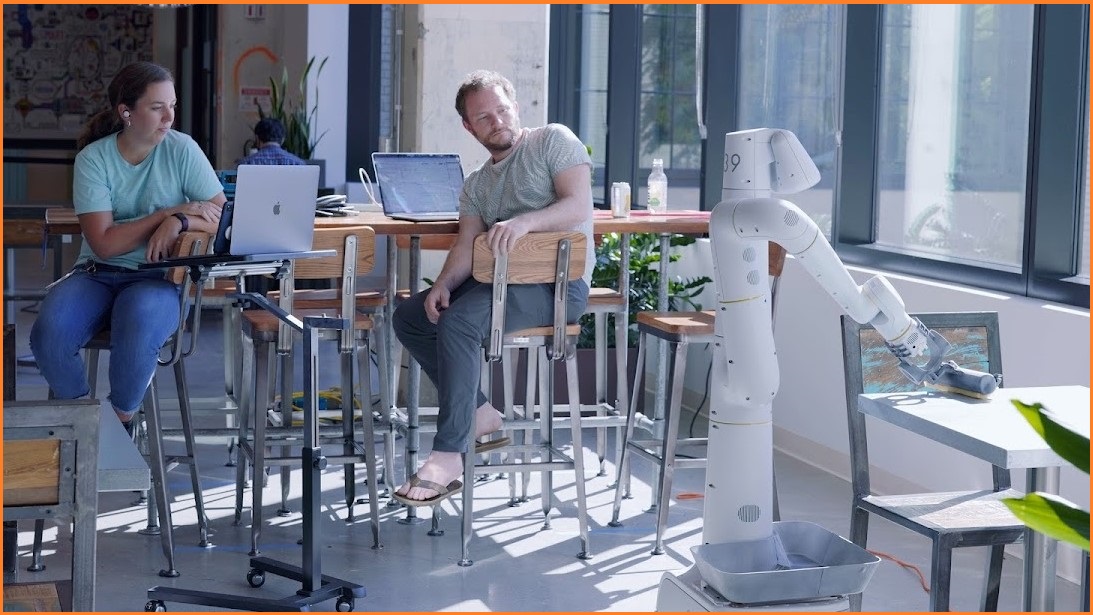A fleet of 100 robots, known as ‘Everyday Robots’, is being put to work cleaning the US offices of Alphabet, Google’s parent company.
The robots' tasks include wiping tables, tidying up, sorting recycling and organising chairs.
While these jobs might seem fairly mundane, it actually takes a significant amount of programming and machine learning capacity on the part of the robot to be able to handle these kinds of roles.
Something that’s far more challenging is training robots to do things human find difficult, like playing chess or advanced mathematics.
Created in X, Google’s moonshot lab, the goal of the Everyday Robot Project is to develop a general-purpose learning robot that can operate autonomously in unstructured environments like homes and offices.
It’s a complex, largely unsolved problem that entails tackling some of the hardest hardware and software challenges in the field of robotics.
From one to many tasks
Instead of trying to script all the possible ways to pick up a cup of coffee or open a door, the team has been working for some years on developing robots that are inexpensive and can be taught to complete a range of tasks.
“The same robot that sorts trash can now be equipped with a squeegee to wipe tables and use the same gripper that grasps cups to open doors,” said Hans Peter Brøndmo, chief robot officer at X.
To function as useful everyday assistants, the robots require cameras along with advanced machine learning models to see and understand the world they move around in; they also need the ability to grasp everyday objects, and sensors to safely navigate their spaces around them.
With advances in machine learning, it’s possible to develop self-learning robots, developing them from machines that complete specific tasks in specially-designed, structured environments that rely on painstaking coding.
“This approach simply won’t work in the messy complex spaces of our everyday lives. …We believe that for robots to be helpful in the unstructured and unpredictable spaces where we live and work, they can't be programmed: they have to learn.”
Robots that learn are not programmed
Using a combination of machine learning techniques like reinforcement learning, collaborative learning and learning from demonstration, the robots have steadily gained a better understanding of the world around them and become more skilled at doing everyday tasks.
The Everyday Robots were shown to improve through practice, so the team wanted to take what the robots had learned from performing one task and apply it to different tasks, but without rebuilding the robot or writing lots of code from scratch.
The team sees a lot of potential in the future and is moving out of the rapid prototyping environment of X to focus on expanding its pilots to some of Google’s Bay Area campuses.
“We imagine our robots helping us in a myriad of ways, like enabling older people to maintain their independence for longer.
We believe that robots have the potential to have a profoundly positive impact on society and can play a role in enabling us to live healthier and more sustainable lives,” Brøndmo said.










